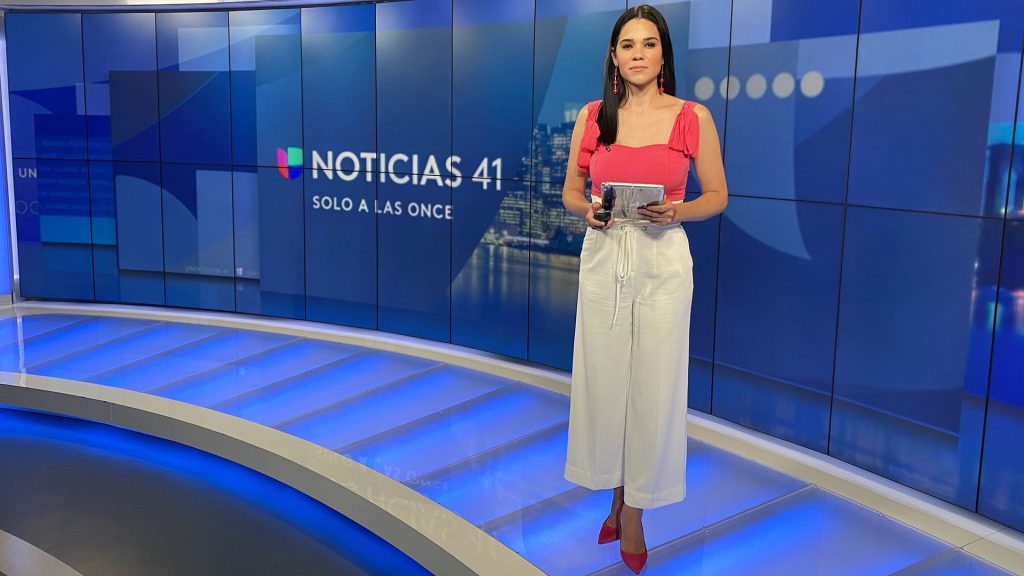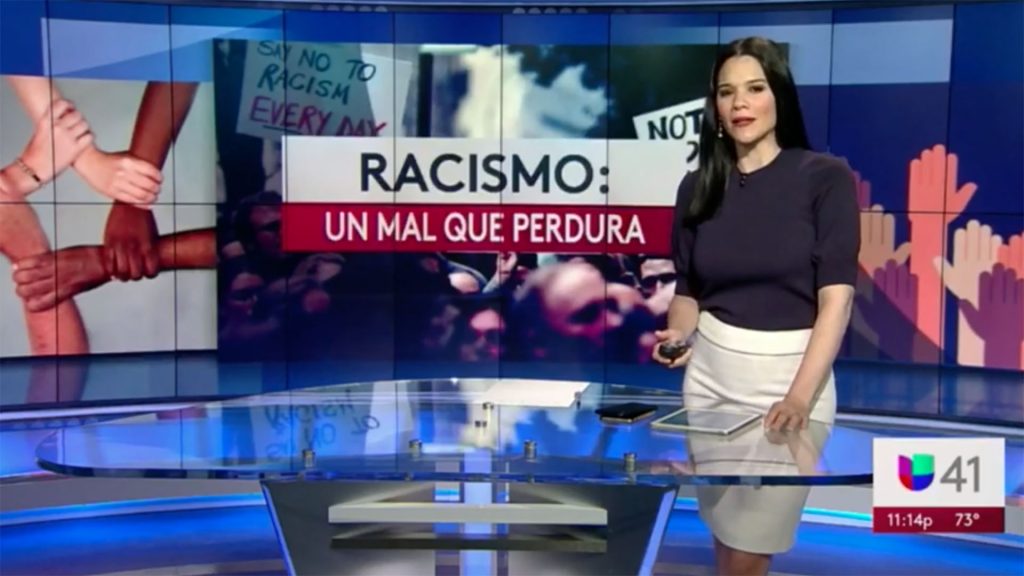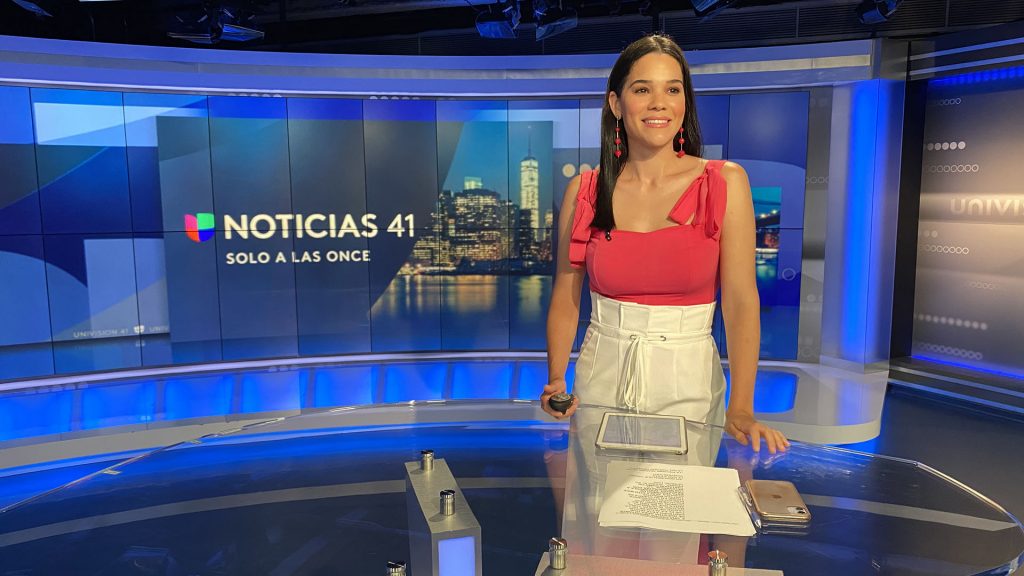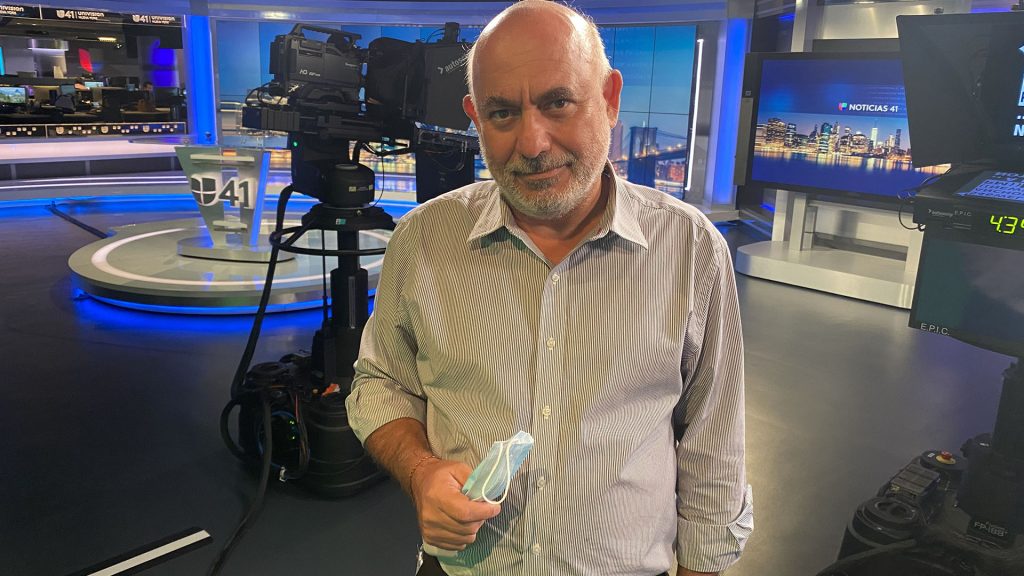“Yes. Isn’t that incredible?” Esteban Creste, VP and news director at Univision’s New York station WXTV, is taking a well-earned victory lap. The station’s late news, Solo a las Once (Only at Eleven), won the July sweep in Adults 18-49 and came in second in Adults 25-54 — that’s against all New York stations, regardless of language. “It’s not only that we’re number one,” Creste says, “it’s number one during these times that people are desperate for information.”

Almost a year ago exactly, Creste and his team made a big bet — one that’s now paying off. As we reported last September, they decided to revamp their late news completely, throwing out the rule book in favor of a bold new format. Armed with Magid research that said viewers wanted in-depth coverage of critical issues in their community, Creste jettisoned the usual mix of short packages and voice-overs to focus on two or three major topics and newsmaker interviews every night. “There were big issues out there that people really care about and that affect their lives. We needed to go in-depth into that, and that is not just a matter of doing a 90-second package or a 30-second VO,” Creste says. Now, the individual reports get whatever time they need to tell the story. The current record is eight minutes. “I always have the theme: Don’t do long stories, do extensive stories.”
“On regular days, other newscasts might lead with a fire,” Creste says. “We might lead with what we decide is important for our viewers. I don’t want to sound arrogant, but it’s based on research. We know what they care about.” Creste calls standard breaking news fare “hit and run,” and he’s not afraid to ignore routine stories or push them far down into the program, often as voice-overs. ”I don’t care that I might not be first reporting on a hit and run,” he says, “but I do want to be first to do an in-depth analysis of race relations.”

When I caught up with Creste recently, he walked me through the previous night’s lineup: two long stories on the debate over reopening schools amidst the pandemic right off the top. The newscast was covering the school issue and its ripple effects every night. “This decision has huge ramifications for every single home,” Creste says. “And it’s not just the education of the kids. It’s the economic impact at home, it’s the health of the grandparents, it’s sending the kids to school not knowing if they’re going to get sick or not.”
Solo a las Once is “solo” in more ways than one. Yisel Tejeda is the sole anchor. Ironically, she lost her male co-anchor to budget cuts before the format change, but in the new incarnation, it turns out to be a virtue. “It was, in a way, the perfect format to dig deep into those issues,” Creste says.

There’s still a meteorologist on the broadcast — we haven’t left Planet Earth entirely — but Creste dropped the sports segment when the pandemic hit and doesn’t plan to bring it back. There is occasional news coverage of cultural events, but no celebrity or pop culture stories: “We let the network take care of that,” Creste says. “But in the newscast, we’re going to give them the real stuff.” (The station’s 6 p.m. newscast has stuck with a more traditional approach.)
As you can imagine, there were skeptics in the newsroom. “At first, there were some members of the team who weren’t too sure that this was going to work,” Creste says. “[I had to] show them the light, convince them that this was the way to go. For them, it was hard all of a sudden not to cover the hit and run. Old habits are hard to change. You’ve got to talk to a lot of people. Let them know exactly what you’re doing. Be open, be transparent. Answer questions, allow them to ask you questions and answer as much as possible.”
Today, the newsroom staff has come around to the new format, Creste says — big time. “Now, this thing is flawless — a well-oiled machine. They love it. They really love it, and they come up with ideas all the time.” Creste also gives a shout-out to his General Manager Roberto Yañez and Univision corporate executives Chris Peña and Diane Kniowski for their support. (WARNING: Do not try this at home unless your bosses back you up.)

The health and economic crisis of COVID-19 and the movement for racial justice have inspired many local stations to double down on service journalism, but Univision and Telemundo are building on a long tradition of deep connections between the Spanish-language news organizations and the Hispanic audience. We’ve reported on Telemundo’s coronavirus-related projects, and our story last year on Creste’s station discovering the power of WhatsApp for its consumer segment 41 A Tú Lado (On Your Side) remains one of our most popular to this day.
To keep that connection strong, Creste urges his team to stay in touch with the community — a habit he worries some journalists have lost. Before the pandemic made it hard, he urged his reporters to spend part of their weekend in the often struggling areas they cover, and he would regularly do the same. “Walk the ground. [Explore] the neighborhood, observe people: what they eat, what they listen to. Talk to people — you know, what reporters used to do.”
The lesson sounds pretty simple. Do the work to find out what your viewers really need from you. But that’s not the only thing Creste has learned from his successful innovation. “The biggest lesson is that we sometimes underestimate the intelligence of our viewers or their interest. It’s okay to try something new. We broke the mould, and we see that people wanted this. They wanted more in-depth. ‘Tell me more, give me the whole idea, the whole picture.’”
Get the Lab Report: The most important stories delivered to your inbox
